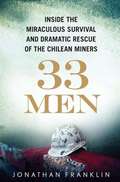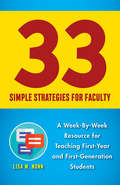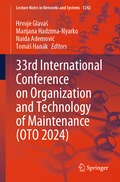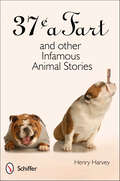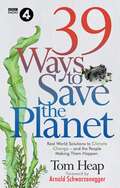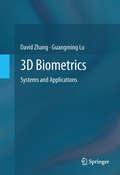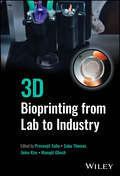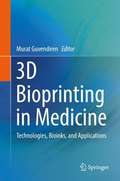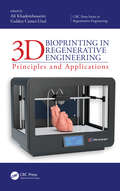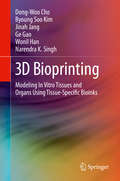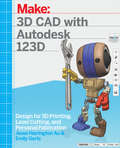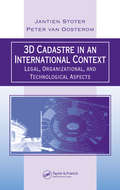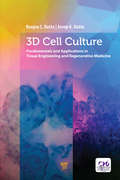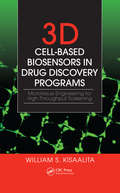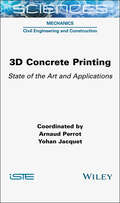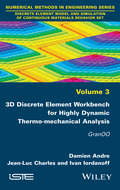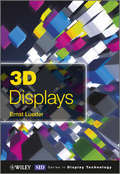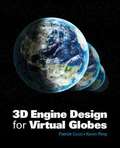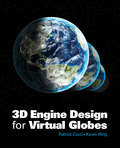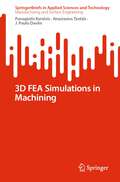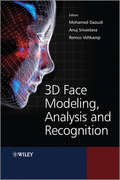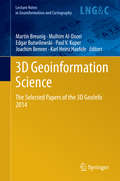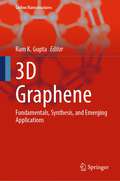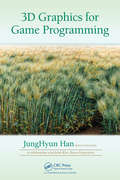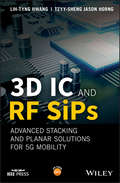- Table View
- List View
33 Men: Inside the Miraculous Survival and Dramatic Rescue of the Chilean Miners
by Jonathan Franklin<p>Having had unparalleled access to the Chilean mine disaster, award-winning journalist Jonathan Franklin takes readers to the heart of a remarkable story of human endurance, survival, and historic heroism. <p><i>33 Men</i> is the groundbreaking, authoritative account of the Chilean mine disaster, one of the longest human entrapments in history. Rushing to the scene when the miners were discovered, Franklin obtained a coveted "Rescue Team" pass and reported directly from the front lines of the rescue operation, beyond police controls, for six weeks. Based on more than 110 intimate interviews with the miners, their families, and the rescue team, Franklin's narrative captures the remarkable story of these men and women, in details shocking, beautiful, comedic, and heroic. <p>Gripping and raw with never-before-revealed details, <i>33</i> Men is a true story that reads like a thriller.</p>
33 Simple Strategies for Faculty: A Week-By-Week Resource for Teaching First-Year and First-Generation Students
by Lisa M. NunnMany students struggle with the transition from high school to university life. This is especially true of first-generation college students, who are often unfamiliar with the norms and expectations of academia. College professors usually want to help, but many feel overwhelmed by the prospect of making extra time in their already hectic schedules to meet with these struggling students. 33 Simple Strategies for Faculty is a guidebook filled with practical solutions to this problem. It gives college faculty concrete exercises and tools they can use both inside and outside of the classroom to effectively bolster the academic success and wellbeing of their students. To devise these strategies, educational sociologist Lisa M. Nunn talked with a variety of first-year college students, learning what they find baffling and frustrating about their classes, as well as what they love about their professors’ teaching. Combining student perspectives with the latest research on bridging the academic achievement gap, she shows how professors can make a difference by spending as little as fifteen minutes a week helping their students acculturate to college life. Whether you are a new faculty member or a tenured professor, you are sure to find 33 Simple Strategies for Faculty to be an invaluable resource.
33rd International Conference on Organization and Technology of Maintenance (Lecture Notes in Networks and Systems #1242)
by Naida Ademović Hrvoje Glavaš Marijana Hadzima-Nyarko Tomáš HanákThis book offers a comprehensive and innovative exploration of maintenance technologies, blending fundamental theories with practical applications in modern engineering systems. Covering a broad range of topics, it examines areas such as smart street lighting for energy conservation, the effects of faulty power supplies on equipment, and the use of digital twin technology in concrete plant operations. Emerging and unique subjects, such as utilizing unused faculty computers for cryptocurrency mining and employing augmented reality for maintenance scheduling, underscore innovative approaches. Targeted at engineers, maintenance professionals, researchers, and students, the book provides valuable insights for enhancing asset reliability, operational efficiency, and safety protocols across various industries. The collected contributions emphasize the interdisciplinary nature of maintenance and serve as a platform for exchanging expertise and introducing innovative methods into daily practice.
37 Cents a Fart and other Infamous Animal Stories
by Henry HarveyTrue, entertaining stories about real animals accompanied by 60 charming illustrations40+ vignettes about charismatic, humorous, and genius members of the animal kingdomA page turner with funny (sometimes adult funny) twists
39 Ways to Save the Planet
by Tom HeapWe got ourselves into this. Here's how we can get ourselves out.We know the problem: the amount of biodiversity loss, the scale of waste and pollution, the amount of greenhouse gas we pump into the air... it's unsustainable. We have to do something. And we are resourceful, adaptable and smart. We have already devised many ways to reduce climate change - some now proven, others encouraging and craving uptake. Each one is a solution to get behind.In 39 Ways to Save the Planet, Tom Heap reveals some of the real-world solutions to climate change that are happening around the world, right now. From tiny rice seeds and fossil fuel free steel to grazing elk and carbon-capturing seagrass meadows, each chapter reveals the energy and optimism in those tackling the fundamental problem of our age. Accompanying a major BBC Radio 4 series in collaboration with the Royal Geographical Society, 39 Ways to Save the Planet is a fascinating exploration of our attempt to build a better future, one solution at a time. A roadmap to global action on climate change, it will encourage you to add your own solutions to the list.
3D Biometrics: Systems and Applications
by David Zhang Guangming LuAutomatic personal authentication using biometric information is becoming more essential in applications of public security, access control, forensics, banking, etc. Many kinds of biometric authentication techniques have been developed based on different biometric characteristics. However, most of the physical biometric recognition techniques are based on two dimensional (2D) images, despite the fact that human characteristics are three dimensional (3D) surfaces. Recently, 3D techniques have been applied to biometric applications such as 3D face, 3D palmprint, 3D fingerprint, and 3D ear recognition. This book introduces four typical 3D imaging methods, and presents some case studies in the field of 3D biometrics. This book also includes many efficient 3D feature extraction, matching, and fusion algorithms. These 3D imaging methods and their applications are given as follows: - Single view imaging with line structured-light: 3D ear identification - Single view imaging with multi-line structured-light: 3D palmprint authentication - Single view imaging using only 3D camera: 3D hand verification - Multi-view imaging: 3D fingerprint recognition 3D Biometrics: Systems and Applications is a comprehensive introduction to both theoretical issues and practical implementation in 3D biometric authentication. It will serve as a textbook or as a useful reference for graduate students and researchers in the fields of computer science, electrical engineering, systems science, and information technology. Researchers and practitioners in industry and R&D laboratories working on security system design, biometrics, immigration, law enforcement, control, and pattern recognition will also find much of interest in this book.
3D Bioprinting from Lab to Industry
by Sabu Thomas Prosenjit Saha Jinku Kim Manojit GhoshA complete overview of bioprinting, from fundamentals and essential topics to recent advances and future applications Additive manufacturing, also known as 3D printing, is one of the most transformative technological processes to emerge in recent decades. Its layer-by-layer construction method can create objects to remarkably precise specifications with minimal waste or energy consumption. Bioprinting, a related process that employs cells and biomaterials instead of man-made substances or industrial materials, has a range of biomedical and chemical uses that make it an exciting and fast-growing area of research. 3D Bioprinting from Lab to Industry offers a cutting-edge overview of this topic, its recent advances, and its future applications. Taking an interdisciplinary approach to a flourishing research field, this book exceeds all existing treatments of the subject in its scope and comprehensiveness. Moving from fundamental principles of the technology to its immense future potential, this is a must-own volume for scientists looking to incorporate this process into their research or product development. 3D Bioprinting from Lab to Industry readers will also find: Treatment of printing parameters, surface topography requirements, and much more Detailed discussion of topics including 5D printing in the medical field, dynamic tuning, the multi-material extrusion approach, and many others A complete account of the bioprinting process, from lab requirements to commercialization 3D Bioprinting from Lab to Industry is ideal for researchers—graduate and post-doctoral scholars—in the areas of materials science, biomedical engineering, chemical engineering, biotechnology, and biochemistry.
3D Bioprinting in Medicine: Technologies, Bioinks, and Applications
by Murat GuvendirenThis book provides current and emerging developments in bioprinting with respect to bioprinting technologies, bioinks, applications, and regulatory pathways. Topics covered include 3D bioprinting technologies, materials such as bioinks and bioink design, applications of bioprinting complex tissues, tissue and disease models, vasculature, and musculoskeletal tissue. The final chapter is devoted to clinical applications of bioprinting, including the safety, ethical, and regulatory aspects. This book serves as a go-to reference on bioprinting and is ideal for students, researchers and professionals, including those in academia, government, the medical industry, and healthcare.
3D Bioprinting in Regenerative Engineering: Principles and Applications (CRC Press Series In Regenerative Engineering)
by Ali Khademhosseini Gulden Camci-UnalRegenerative engineering is the convergence of developmental biology, stem cell science and engineering, materials science, and clinical translation to provide tissue patches or constructs for diseased or damaged organs. Various methods have been introduced to create tissue constructs with clinically relevant dimensions. Among such methods, 3D bioprinting provides the versatility, speed and control over location and dimensions of the deposited structures. Three-dimensional bioprinting has leveraged the momentum in printing and tissue engineering technologies and has emerged as a versatile method of fabricating tissue blocks and patches. The flexibility of the system lies in the fact that numerous biomaterials encapsulated with living cells can be printed. This book contains an extensive collection of papers by world-renowned experts in 3D bioprinting. In addition to providing entry-level knowledge about bioprinting, the authors delve into the latest advances in this technology. Furthermore, details are included about the different technologies used in bioprinting. In addition to the equipment for bioprinting, the book also describes the different biomaterials and cells used in these approaches. This text: Presents the principles and applications of bioprinting Discusses bioinks for 3D printing Explores applications of extrusion bioprinting, including past, present, and future challenges Includes discussion on 4D Bioprinting in terms of mechanisms and applications
3D Bioprinting: Modeling In Vitro Tissues and Organs Using Tissue-Specific Bioinks
by Ge Gao Dong-Woo Cho Byoung Soo Kim Jinah Jang Wonil Han Narendra K. SinghThis text advances fundamental knowledge in modeling in vitro tissues/organs as an alternative to 2D cell culture and animal testing. Prior to engineering in vitro tissues/organs,the descriptions of prerequisites (from pre-processing to post-processing) in modeling in vitro tissues/organs are discussed. The most prevalent technologies that have been widely used for establishing the in vitro tissue/organ models are also described, including transwell, cell spheroids/sheets, organoids, and microfluidic-based chips. In particular, the authors focus on 3D bioprinting in vitro tissue/organ models using tissue-specific bioinks. Several representative bioprinting methods and conventional bioinks are introduced. As a bioink source, decellularized extracellular matrix (dECM) are importantly covered, including decellularization methods, evaluation methods for demonstrating successful decellularization, and material safety. Taken together, the authors delineate various application examples of 3D bioprinted in vitro tissue/organ models especially using dECM bioinks.
3D CAD with Autodesk 123D: Designing for 3D Printing, Laser Cutting, and Personal Fabrication
by Emily Gertz Jesse Harrington AuIf you've arrived at a stage in your creative life where you're ready to do more with your computer, it's time to learn how to combine its power with new advances in computer-aided design (CAD) and fabrication to make something awesome--in three dimensions! The free suite of Autodesk 123D software offers all the tools you need to capture or design three-dimensional objects and characters. This book tells you how to harness that power to print or fabricate just about anything you can imagine. Want to make something mechanical or structural that's based on precise measurements? 123D Design can help! Ready to create something cool based on a character, an organic shape, or something found in nature? 123D Catch, 123D Meshmixer, and 123D Sculpt+ will assist. Learn how to use these tools, plus 123D Make--perfect for prototyping designs you'll cut with a CNC mill--to take your creativity to a new level.An ideal book for Makers, hobbyists, students, artists, and designers (including beginners!), this book opens up the inexpensive world of personal fabrication to everyone.In 3D CAD with Autodesk 123D, you’ll:Meet the classic "Stanford bunny" and learn to modify it with MeshmixerScan and 3D print anything around youDesign your own 3D-printed guitarFind models in the Sculpt+ community and make a skeleton!Build a birdhouse, prototype a playground, or create a statueLearn everything from basics to troubleshooting skillsGet started making right away
3D Cadastre in an International Context: Legal, Organizational, and Technological Aspects
by Peter van Oosterom Jantien E. StoterThe increase in private property value, growth of underground and multilevel development, and the emergence of 3D technologies in planning and GIS drives the need to record 3D situations in cadastral registration. 3D Cadastre in an International Context: Legal, Organizational, and Technological Aspects demonstrates how to record 3D scenarios in ord
3D Cell Culture: Fundamentals and Applications in Tissue Engineering and Regenerative Medicine
by Ranjna C. Dutta Aroop K. Dutta3D cell culture is yet to be adopted and exploited to its full potential. It promises to upgrade and bring our understanding about human physiology to the highest level with the scope of applying the knowledge for better diagnosis as well as therapeutics. The focus of this book is on the direct impact of novel technologies and their evolution into viable products for the benefit of human race. It also describes the fundamentals of cell microenvironment to bring forth the relevance of 3D cell culture in tissue engineering and regenerative medicine. It discusses the extracellular matrix/microenvironment (ECM) and emphasizes its significance for growing cells in 3D to accomplish physiologically viable cell mass/tissue ex vivo. The book bridges the knowledge gaps between medical need and the technological applications through illustrations. It discusses the available models for 3D cell culture as well as the techniques to create substrates and scaffolds for achieving desired 3D microenvironment.
3D Cell-Based Biosensors in Drug Discovery Programs: Microtissue Engineering for High Throughput Screening
by William S. KisaalitaAdvances in genomics and combinatorial chemistry during the past two decades inspired innovative technologies and changes in the discovery and pre-clinical development paradigm with the goal of accelerating the process of bringing therapeutic drugs to market. Written by William Kisaalita, one of the foremost experts in this field, 3D Cell-Based Bio
3D Concrete Printing: State of the Art and Applications (ISTE Consignment)
by Arnaud Perrot Yohan JacquetThis book presents a comprehensive overview of the state of the art in additive manufacturing in the world of concrete construction. 3D Concrete Printing tackles its subject from several angles, including issues relating to concrete materials (such as their formulation or fresh-state behavior), the various printing processes that have been developed, and how to describe the mechanical behavior and architectural and structural designs of printed structures. This book also considers the transition to application and industrialization, and the relevance of these new technologies in reducing the environmental impact of the construction sector. Finally, material characterization methodologies are presented with a view to describing the behavior of materials both before and after printing, and the modeling tools used to simulate the process are listed.
3D Discrete Element Workbench for Highly Dynamic Thermo-mechanical Analysis
by Ivan Iordanoff Damien Andre Jean-Luc CharlesComplex behavior models (plasticity, cracks, visco elascticity) face some theoretical difficulties for the determination of the behavior law at the continuous scale. When homogenization fails to give the right behavior law, a solution is to simulate the material at a meso scale in order to simulate directly a set of discrete properties that are responsible of the macroscopic behavior. The discrete element model has been developed for granular material. The proposed set shows how this method is capable to solve the problem of complex behavior that are linked to discrete meso scale effects. The first book solves the local problem, the second one presents a coupling approach to link the structural effects to the local ones, this third book presents the software workbench that includes all the theoretical developments.
3D Displays
by Ernst LuederThis book addresses electrical engineers, physicists, designers of flat panel displays (FDPs), students and also scientists from other disciplines interested in understanding the various 3D technologies. A timely guide is provided to the present status of development in 3D display technologies, ready to be commercialized as well as to future technologies.Having presented the physiology of 3D perception, the book progresses to a detailed discussion of the five 3D technologies: stereoscopic and autostereoscopic displays; integral imaging; holography and volumetric displays, and:Introduces spatial and temporal multiplex for the two views needed for stereoscopic and autostereoscopic displays; Outlines dominant components such as retarders for stereoscopic displays, and fixed as well as adjustable lenticular lenses and parallax barriers for auto- stereoscopic displays; Examines the high speed required for 240 Hz frames provided by parallel addressing and the recently proposed interleaved image processing; Explains integral imaging, a true 3D system, based on the known lenticulars which is explored up to the level of a 3D video projector using real and virtual images; Renders holographic 3D easier to understand by using phasors known from electrical engineering and optics leading up to digital computer generated holograms; Shows volumetric displays to be limited by the number of stacked FPDs; and, Presents algorithms stemming from computer science to assess 3D image quality and to allow for bandwidth saving transmission of 3D TV signals. The Society for Information Display (SID) is an international society, which has the aim of encouraging the development of all aspects of the field of information display. Complementary to the aims of the society, the Wiley-SID series is intended to explain the latest developments in information display technology at a professional level. The broad scope of the series addresses all facets of information displays from technical aspects through systems and prototypes to standards and ergonomics
3D Engine Design for Virtual Globes
by Patrick Cozzi Kevin RingSupported with code examples and the authors’ real-world experience, this book offers the first guide to engine design and rendering algorithms for virtual globe applications like Google Earth and NASA World Wind. The content is also useful for general graphics and games, especially planet and massive-world engines. With pragmatic advice throughout, it is essential reading for practitioners, researchers, and hobbyists in these areas, and can be used as a text for a special topics course in computer graphics. Topics covered include: Rendering globes, planet-sized terrain, and vector data; Multithread resource management; Out-of-core algorithms; Shader-based renderer design.
3D Engine Design for Virtual Globes
by Patrick Cozzi Kevin RingSupported with code examples and the authors' real-world experience, this book offers the first guide to engine design and rendering algorithms for virtual globe applications like Google Earth and NASA World Wind. The content is also useful for general graphics and games, especially planet and massive-world engines. With pragmatic advice throughout
3D FEA Simulations in Machining (SpringerBriefs in Applied Sciences and Technology)
by J. Paulo Davim Panagiotis Kyratsis Anastasios TzotzisThis book covers machining simulations using advanced nonlinear finite element analysis (FEA) methodologies coupled with CAD-based techniques. The content increases awareness about the possibilities to reduce the actual experimental work via experimentally validated simulations using nonlinear finite element analysis.
3D Face Modeling, Analysis and Recognition
by Remco Veltkamp Anuj Srivastava Mohamed Daoudi3D Face Modeling, Analysis and Recognition presents methodologies for analyzing shapes of facial surfaces, develops computational tools for analyzing 3D face data, and illustrates them using state-of-the-art applications. The methodologies chosen are based on efficient representations, metrics, comparisons, and classifications of features that are especially relevant in the context of 3D measurements of human faces. These frameworks have a long-term utility in face analysis, taking into account the anticipated improvements in data collection, data storage, processing speeds, and application scenarios expected as the discipline develops further.The book covers face acquisition through 3D scanners and 3D face pre-processing, before examining the three main approaches for 3D facial surface analysis and recognition: facial curves; facial surface features; and 3D morphable models. Whilst the focus of these chapters is fundamentals and methodologies, the algorithms provided are tested on facial biometric data, thereby continually showing how the methods can be applied.Key features:* Explores the underlying mathematics and will apply these mathematical techniques to 3D face analysis and recognition* Provides coverage of a wide range of applications including biometrics, forensic applications, facial expression analysis, and model fitting to 2D images* Contains numerous exercises and algorithms throughout the book
3D Geoinformation Science: The Selected Papers of the 3D GeoInfo 2014 (Lecture Notes in Geoinformation and Cartography #94)
by Martin Breunig Mulhim Al-Doori Edgar Butwilowski Paul V. Kuper Joachim Benner Karl Heinz HaefeleNowadays 3D Geoinformation is needed for many planning and analysis tasks. For example, 3D city and infrastructure models are paving the way for complex environmental and noise analyzes. 3D geological sub-surface models are needed for reservoir exploration in the oil-, gas-, and geothermal industry. Thus 3D Geoinformation brings together researchers and practitioners from different fields such as the geo-sciences, civil engineering, 3D city modeling, 3D geological and geophysical modeling, and, last but not least, computer science. The diverse challenges of 3D Geoinformation Science concern new approaches and the development of standards for above- and under-ground 3D modeling, efficient 3D data management, visualization and analysis. Finally, the integration of different 3D approaches and data models is seen as one of the most important challenges to be solved.
3D Graphene: Fundamentals, Synthesis, and Emerging Applications (Carbon Nanostructures)
by Ram K. GuptaThis book provides a comprehensive overview of the synthesis, properties, and emerging applications of 3D graphene. It begins with an introduction to 3D graphene and covers the methods for synthesizing and printing 3D graphene. The book explores the characteristics of 3D graphene, including its morphology, surface area, and porosity, and the techniques used for characterizing it. Architectural and chemical aspects of 3D graphene for emerging applications are discussed, including energy storage, environmental remediation, and biosensing. The book reviews recent advancements in 3D graphene for electrochemical sensors, biosensors, and optical sensors, as well as its use in flexible sensors. It also covers the use of graphene-based materials for the remediation of hydrogen sulfide gas and the removal of inorganic pollutants and pharmaceutical residues. The book further explores the use of 3D graphene in metal-ion and metal-air batteries, flexible and wearable batteries, and high-performance supercapacitors. It also covers its use in photovoltaics, fuel cells, and as electrocatalysts and photocatalysts for water splitting. Additionally, the book discusses the use of 3D graphene in flexible electronics, capacitive de-ionization of water, and theranostic applications. Finally, the book addresses the toxicity, stability, recycling, and risk assessments of 3D graphene, providing a comprehensive understanding of the material's safety and sustainability considerations. Overall, this book is a valuable resource for researchers, engineers, and students interested in the synthesis, properties, and applications of 3D graphene.
3D Graphics for Game Programming
by JungHyun HanDesigned for advanced undergraduate and beginning graduate courses, 3D Graphics for Game Programming presents must-know information for success in interactive graphics. Assuming a minimal prerequisite understanding of vectors and matrices, it also provides sufficient mathematical background for game developers to combine their previous experie
3D IC and RF SiPs: Advanced Stacking And Planar Solutions For 5g Mobility (Wiley - IEEE)
by Lih-Tyng Hwang Tzyy-Sheng Jason HorngAn interdisciplinary guide to enabling technologies for 3D ICs and 5G mobility, covering packaging, design to product life and reliability assessments Features an interdisciplinary approach to the enabling technologies and hardware for 3D ICs and 5G mobility Presents statistical treatments and examples with tools that are easily accessible, such as Microsoft’s Excel and Minitab Fundamental design topics such as electromagnetic design for logic and RF/passives centric circuits are explained in detail Provides chapter-wise review questions and powerpoint slides as teaching tools
